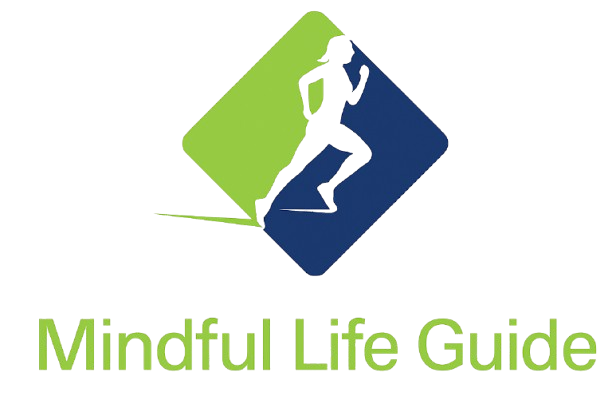
Stress is a universal experience, a relentless companion in our fast-paced lives. Whether it’s the pressure of a looming deadline, the weight of personal challenges, or the constant buzz of notifications, stress can feel like an unwelcome guest that overstays its welcome. But what if we could not just cope with stress but thrive through it? Mental resilience—the ability to adapt, recover, and grow stronger in the face of adversity—is the key to transforming stress from a foe into a catalyst for growth. In this in-depth guide, we’ll explore practical, science-backed mental resilience practices to help you navigate stress with confidence and grace. Through storytelling, expert insights, and actionable advice, you’ll discover how to build a resilient mindset that empowers you to face life’s challenges head-on.
What Is Mental Resilience, and Why Does It Matter?
Mental resilience is like a mental muscle that helps you bounce back from setbacks, adapt to change, and maintain balance under pressure. It’s not about avoiding stress—because let’s face it, stress is inevitable—but about developing the tools to handle it effectively. According to the American Psychological Association, resilience involves behaviors, thoughts, and actions that anyone can learn and develop over time. It’s the difference between feeling overwhelmed by a crisis and finding a way to move forward with purpose.
Imagine Sarah, a single mother juggling a demanding job and parenting two young kids. When her company announced layoffs, the stress was palpable. Instead of spiraling, Sarah leaned on her resilience practices: daily mindfulness, journaling, and reaching out to her support network. These tools didn’t eliminate the stress, but they helped her stay grounded, make clear decisions, and eventually land a better role. Her story shows that resilience isn’t about being unbreakable—it’s about bending without breaking.
The Science Behind Mental Resilience
Resilience isn’t just a buzzword; it’s rooted in neuroscience and psychology. Research from the National Institute of Mental Health shows that stress activates the body’s fight-or-flight response, flooding it with cortisol and adrenaline. While this response is helpful in short bursts, chronic stress can impair cognitive function, weaken immunity, and increase anxiety. Resilience practices, however, can rewire the brain. Neuroplasticity—the brain’s ability to form new neural connections—means we can train ourselves to respond to stress more effectively.
For example, practices like mindfulness meditation can reduce activity in the amygdala, the brain’s fear center, while strengthening the prefrontal cortex, which governs decision-making and emotional regulation. A 2018 study published in Frontiers in Psychology found that regular mindfulness practice increased resilience in high-stress environments. This science gives us hope: resilience isn’t fixed; it’s a skill we can cultivate.
Core Mental Resilience Practices for Managing Stress
Let’s dive into practical strategies you can start using today. These practices are designed to fit into busy lives, requiring minimal time but offering maximum impact. Each one is backed by research and real-world application, making them accessible whether you’re a beginner or a seasoned resilience builder.
1. Mindfulness and Meditation: Anchoring Yourself in the Present
Mindfulness is about staying present, even when stress tries to pull you into a spiral of worry. It’s not about emptying your mind but observing your thoughts without judgment. A Harvard Medical School study found that just 10 minutes of daily mindfulness can reduce stress and improve emotional regulation.
How to Start:
- Find a Quiet Moment: Sit comfortably, close your eyes, and focus on your breath. Notice the air moving in and out.
- Use Guided Apps: Apps like Headspace offer beginner-friendly guided meditations.
- Practice Micro-Mindfulness: When stress spikes, pause for 30 seconds to focus on your senses—what do you see, hear, or feel?
Take John, a software engineer who felt overwhelmed by constant deadlines. He started with five-minute mindfulness sessions during lunch breaks. Over time, he noticed he could handle stressful meetings with a calmer mind, making better decisions under pressure.
2. Cognitive Reframing: Shifting Your Perspective
Cognitive reframing involves changing how you view a stressful situation. Instead of seeing a challenge as a threat, you reframe it as an opportunity. The Greater Good Science Center highlights reframing as a cornerstone of resilience, as it helps you find meaning in adversity.
How to Practice:
- Identify Negative Thoughts: When stressed, ask, “What’s the worst-case scenario, and is it realistic?”
- Find the Silver Lining: If you’re stressed about a presentation, reframe it as a chance to showcase your skills.
- Journal It: Write down a stressful event, then list three ways it could lead to growth.
For instance, when Maria lost a major client, she initially felt defeated. By reframing the loss as a chance to diversify her business, she pivoted to new markets and doubled her revenue within a year.
3. Building a Support Network: You Don’t Have to Go It Alone
Humans are social creatures, and connection is a powerful antidote to stress. A Mayo Clinic study found that strong social support reduces the negative effects of stress and boosts resilience.
How to Build Connections:
- Reach Out Regularly: Schedule coffee dates or virtual chats with friends or mentors.
- Join Communities: Participate in local clubs, online forums, or support groups aligned with your interests.
- Be Vulnerable: Share your challenges with trusted people—it fosters deeper bonds.
When Alex faced burnout as a nurse, he joined a peer support group for healthcare workers. Sharing his struggles and hearing others’ stories helped him feel less isolated and more equipped to cope.
4. Physical Activity: Moving Your Body to Strengthen Your Mind
Exercise isn’t just for physical health—it’s a resilience booster. The American Heart Association notes that physical activity releases endorphins, reduces cortisol, and improves mood. Even a 20-minute walk can make a difference.
Easy Ways to Move:
- Find What You Love: Try yoga, dancing, or hiking—choose activities that feel fun, not forced.
- Incorporate Movement Daily: Take stairs, stretch during breaks, or do a quick workout at home.
- Pair with Mindfulness: Practice mindful walking, focusing on each step to combine physical and mental benefits.
Lila, a teacher, started daily 15-minute yoga sessions to manage classroom stress. Not only did her anxiety decrease, but she also felt more energized and present with her students.
5. Journaling: Processing Emotions Through Writing
Journaling helps you process emotions, gain clarity, and reduce stress. A study from Cambridge University found that expressive writing can improve mental health by reducing rumination.
Journaling Tips:
- Free Write: Spend 10 minutes writing whatever comes to mind without editing.
- Use Prompts: Try questions like, “What’s stressing me out, and what can I control?”
- Reflect on Growth: Write about a past challenge and how you overcame it to build confidence.
When Sam faced a career setback, nightly journaling helped him unpack his fears and identify actionable steps, leading to a successful job transition.
Comparison Table: Resilience Practices at a Glance
Comparing Mental Resilience Practices
| Practice | Time Commitment | Key Benefit | Best For | Difficulty Level |
|---|---|---|---|---|
| Mindfulness | 5–20 min/day | Reduces anxiety, improves focus | Beginners, busy schedules | Easy |
| Cognitive Reframing | 10–15 min/day | Shifts negative thinking, builds optimism | Problem-solvers, analytical minds | Moderate |
| Social Support | Varies | Enhances emotional connection | Extroverts, those feeling isolated | Easy–Moderate |
| Physical Activity | 20–30 min/day | Boosts mood, reduces cortisol | Active individuals, stress relief | Easy |
| Journaling | 10–15 min/day | Processes emotions, clarifies thoughts | Reflective types, writers | Easy |
This table highlights how each practice fits different lifestyles and needs, making it easier to choose what works for you.
Overcoming Common Barriers to Building Resilience
Building resilience isn’t always smooth sailing. Here are common obstacles and how to overcome them:
- Lack of Time: Start small with micro-practices, like a one-minute breathing exercise or a quick journal entry. Consistency trumps duration.
- Skepticism: If you doubt these practices work, try one for a week and track your mood. Small wins build belief.
- Overwhelm: Don’t try everything at once. Pick one practice, master it, then add another.
When Emma, a busy lawyer, felt too overwhelmed to start mindfulness, she began with just one minute of deep breathing before bed. That small step led to a daily habit that transformed her stress management.
Integrating Resilience Practices Into Daily Life
The key to resilience is consistency. Here’s how to make these practices stick:
- Create Routines: Pair a resilience practice with an existing habit, like meditating after brushing your teeth.
- Set Reminders: Use phone alerts or sticky notes to prompt daily practice.
- Track Progress: Use a journal or app to note how you feel after each practice to stay motivated.
For example, Tom, a freelancer, added a 10-minute walk to his lunch routine. Over months, this habit not only reduced his stress but also sparked creative ideas for his work.
FAQ: Common Questions About Mental Resilience and Stress
Q: Can anyone build mental resilience, or is it innate?
A: Anyone can build resilience! While some people may naturally lean toward resilient traits, practices like mindfulness and reframing can be learned and strengthened over time, as supported by PsychCentral.
Q: How long does it take to see results from resilience practices?
A: Results vary, but many people notice small improvements within a week of consistent practice. Significant changes, like reduced anxiety, often take 4–8 weeks, according to research from Mindful.org.
Q: What if I’m too stressed to start these practices?
A: Start with micro-practices, like a 30-second breathing exercise. Even small actions can create a ripple effect, reducing stress enough to build momentum.
Q: Are resilience practices enough, or do I need therapy?
A: Resilience practices are powerful but not a substitute for professional help if you’re struggling with severe stress or mental health issues. A therapist can complement these practices for deeper support.
Q: How do I know which practice is right for me?
A: Experiment with each practice for a week. Notice which one feels most natural and impactful. For example, if you’re social, lean on support networks; if you’re introspective, try journaling.
Conclusion: Your Path to a Resilient Life
Stress is a part of life, but it doesn’t have to define you. By embracing mental resilience practices like mindfulness, cognitive reframing, social connection, physical activity, and journaling, you can transform how you experience and respond to stress. These tools aren’t just about surviving tough moments—they’re about thriving, finding meaning, and growing stronger through adversity. Sarah, John, Maria, Alex, Lila, Sam, Emma, and Tom all found ways to weave resilience into their lives, and their stories show that you can too.
Start small: pick one practice that resonates with you and commit to it for a week. Track how you feel, celebrate small wins, and build from there. Reflect on your progress—what’s working, what’s challenging, and how can you adapt? If you need extra support, don’t hesitate to reach out to friends, a therapist, or online communities. The journey to resilience is personal, but you’re not alone.
As you move forward, remember that resilience is a lifelong skill. Each challenge you face is an opportunity to grow, learn, and become a stronger version of yourself. So, take a deep breath, choose your first step, and start building a life where stress is just a bump in the road—not the destination.
